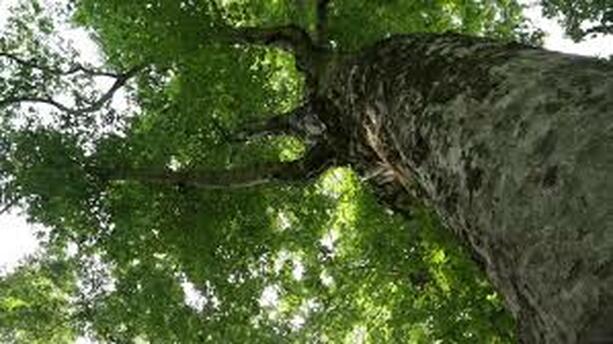 They stand tall, nurturing their offspring to enhance their chances of growing steadily and sturdily. They support their neighbors, transmitting messages across vast and intricate networks to ensure the community’s safety and well-being. They have withstood the cycles of many years, including challenging conditions, yet persist with grace and beauty. They are mothers – mother trees. Much attention has focused lately on the networked nature of forests. Trees exist not simply as individuals but within a highly collaborative, interconnected system, communicating through elaborate circuitry of fungi and root tips. "Forests", notes forester Peter Wohlleben in The Hidden Life of Trees, are superorganisms with interconnections much like ant colonies" Key to this interconnectedness are "Mother Trees", a notion pioneered by Scientist Suzanne Simardin (who appears as a fictionalized character in Richard Powers' The Overstory, the subject of the prior blog). The dominant trees in forests, Mother Trees function as central nodes for extensive underground networks of roots and mycorrhizal fungi. They nurture young trees by spreading fungi to them and conveying needed nutrients. Mother Trees also restrain the unfettered growth of young trees so that they can grow in ways that make them sturdier and more resilient.Writes Wohlleben: " Young trees are so keen on growing quickly that it would be no problem a all for them to grow about 18 inches taller per season. Unfortunately for them, their own mothers do not approve of rapid growth. They shade their offspring with their enormous crowns, and the crowns of all the mature trees close up to form a thick canopy over the forest floor. This canopy lets only 3 percent of available sunlight reach the ground and, therefore, their children's leaves. Three percent--that's practically nothing. With that amount of sunlight, a tree can photosynthesize just enough to keep its own body from dying. There's nothing left to fuel a decent drive upward or even a thicker trunk .... [S]low growth when the tree is young is a prerequisite if a tree is to live to a ripe old age. ... Thanks to slow growth, their inner woody cells are tiny and contain almost no air. That makes the tree flexible and resistant to breaking in storms." Slow growth also makes trees resistant to disease-bearing fungi,, which has difficulty penetrated the their tougher trunks. In the meanwhile, over a period that could last 200 years (the equivalent of 40 human years), the Mother Tree passes along sugar and other nutrients to the offspring. "You might even say they are nursing their babies," notes Wohlleben. Thanks to the attentiveness of Mother Trees, young trees can grow up strong and resilient, and forests can thrive. The same can be said for the roles of mothers (and fathers) within human families and communities. On this Mother’s Day, consider the Mother Trees around you.
0 Comments
Leave a Reply. |
About this Blog
Hi! I'm Nancy Kopans, founder of Urban Edge Forest Therapy. Join me on an adventure to discover creative ways to connect with nature in your daily life, ways that are inspired by urban surroundings that can reveal unexpected beauty, with the potential to ignite a sense of wonder. Archives
April 2023
Categories
All
|

 RSS Feed
RSS Feed